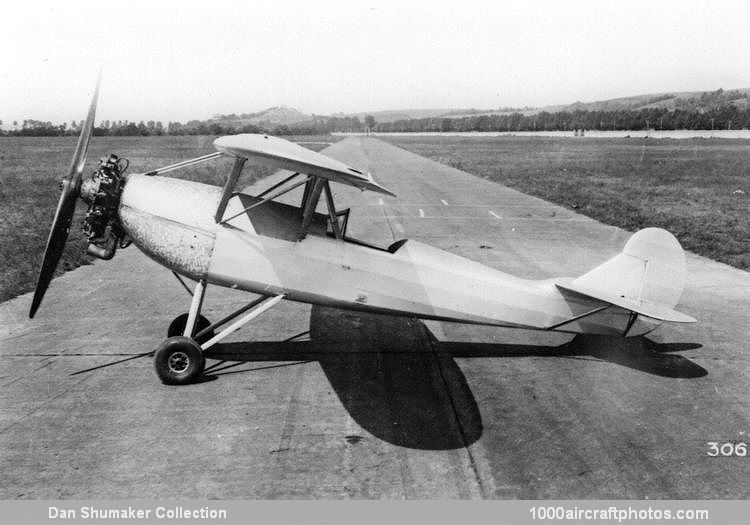From 1921 until 1928 CNA operated a flying school at the Cerveteri airfield in Rome, training 355 new pilots during this period. Under the aegis of CNA was the Pegna-Bonmartini Costruzioni Navali Aeronautiche (Aeronautical Naval Constructions), a small factory which manufactured experimental aircraft for the Italian government. In 1923 the Pegna-Bonmartini interests were transferred to Piaggio & C. in accordance with a directive issued by the Commissariato generale per l'aeronautica (General Commissariat for Aeronautics), and Ing. Pegna became chief designer for the Piaggio firm.
When CNA built the new Littorio civil airport in Rome in 1928, transferring its school facilities to the new field, it also established a factory lo build aircraft designed by other companies, in addition to aero engines and experimental aircraft of original design. CNA built 188 aircraft under license, in addition to its own products.
Powered by the centrifugally-supercharged 170 hp CNA C-7 seven-cylinder air-cooled radial engine, the CNA Eta was a parasol-wing lightplane of disarming simplicity, built in 1933. It could be flown as a single- or tandem-seater in land- or seaplane configuration.
On November 6, 1933, Furio Niclot Doglio, an aerobatics instructor and a teacher of air navigation and surveying at the flight school of CAN, took off with the Eta in single-seat seaplane configuration and reached a height of 27,595 ft (8,411 m), setting a FAI C.bis 2nd category world altitude record for single-seat light seaplanes weighing less than 992 lb (450 kg). With the Eta in single-seat landplane configuration, Doglio reached a height of 32,834 ft (10,008 m) on December 24, 1933, setting a FAI C 2nd category world altitude record for single-seat light landplanes weighing less than 992 lb (450 kg).
In 1936, the Eta was re-engined with a supercharged 150 hp CAN C.VI six-cylinder air-cooled inverted inline engine. On May 16, 1936, Gian Giacomo Chiesi (pilot) and Domenico Rossetti set, with an average speed of 122.80 mls (197.62 km)/hour over a 62.14 mls (100 km) closed-circuit, a world speed record for seaplanes in the FAI C.bis 1st category for multi-seat light landplanes weighing less than 1,499 lb (680 kg).
The photo above shows the single-seat landplane, data below is referring to the tandem-seat landplane, both fitted with the 170 hp CAN C-7 engine. The fate of the sole Eta is unknown.
Span: 32 ft 9.5 in (10.0 m)
Length: 21 ft 3.9 in (6.5 m)
Height: 8 ft 2 in (2.49 m)
Empty weight: 904 lb (410 kg)
Loaded weight: 1,102 lb (500 kg)
Max speed: 136 mph (219 kmh)
Cruise speed: 121 mph (195 kmh)
Landing speed: 40 mph (65 kmh)
Climb: to 19,685 ft (6,000 m) 25 min (landplane)
Climb: to 19,685 ft (6,000 m) 35 min (seaplane)
